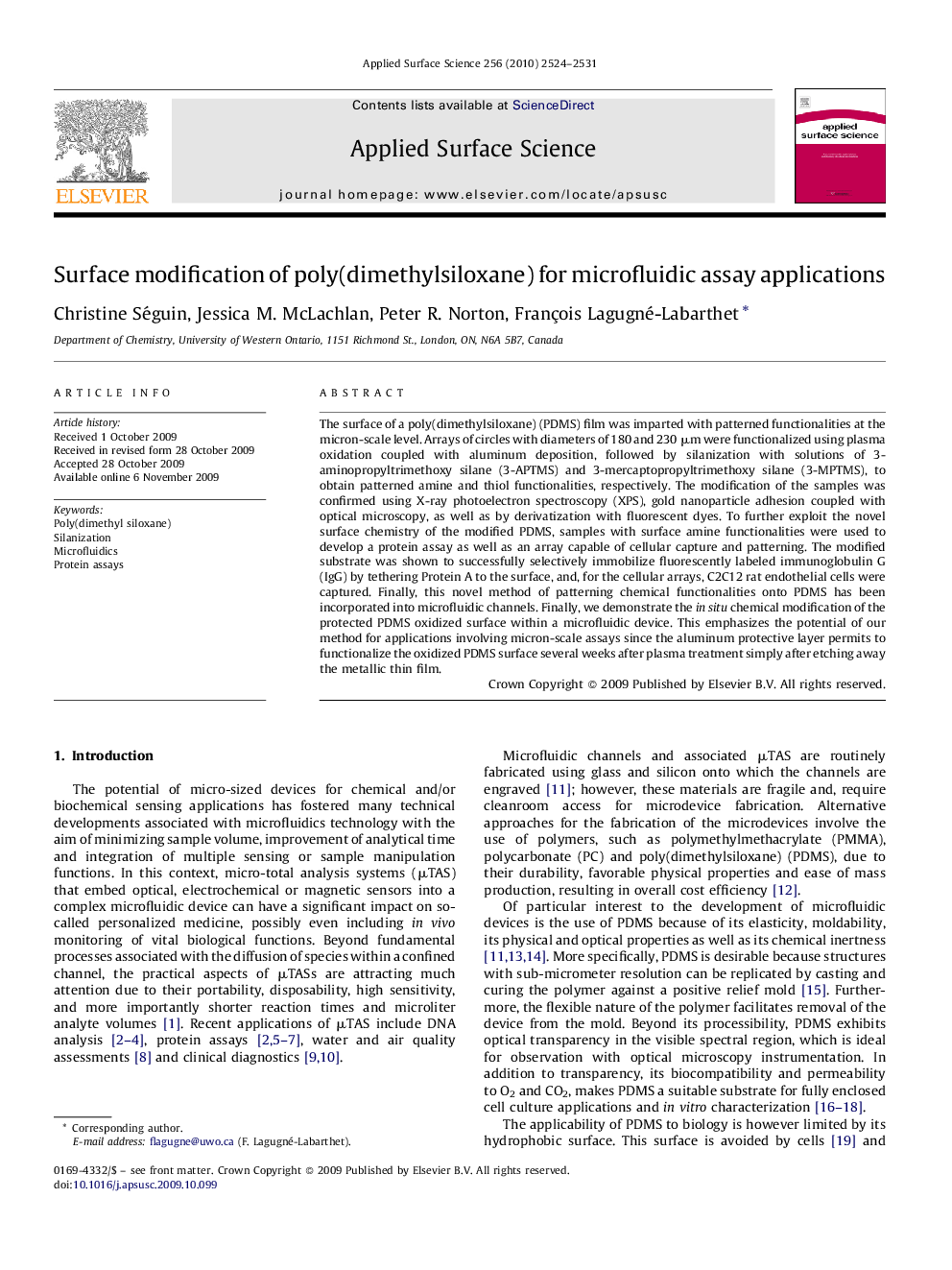| کد مقاله | کد نشریه | سال انتشار | مقاله انگلیسی | نسخه تمام متن |
|---|---|---|---|---|
| 5363294 | 1388299 | 2010 | 8 صفحه PDF | دانلود رایگان |

The surface of a poly(dimethylsiloxane) (PDMS) film was imparted with patterned functionalities at the micron-scale level. Arrays of circles with diameters of 180 and 230 μm were functionalized using plasma oxidation coupled with aluminum deposition, followed by silanization with solutions of 3-aminopropyltrimethoxy silane (3-APTMS) and 3-mercaptopropyltrimethoxy silane (3-MPTMS), to obtain patterned amine and thiol functionalities, respectively. The modification of the samples was confirmed using X-ray photoelectron spectroscopy (XPS), gold nanoparticle adhesion coupled with optical microscopy, as well as by derivatization with fluorescent dyes. To further exploit the novel surface chemistry of the modified PDMS, samples with surface amine functionalities were used to develop a protein assay as well as an array capable of cellular capture and patterning. The modified substrate was shown to successfully selectively immobilize fluorescently labeled immunoglobulin G (IgG) by tethering Protein A to the surface, and, for the cellular arrays, C2C12 rat endothelial cells were captured. Finally, this novel method of patterning chemical functionalities onto PDMS has been incorporated into microfluidic channels. Finally, we demonstrate the in situ chemical modification of the protected PDMS oxidized surface within a microfluidic device. This emphasizes the potential of our method for applications involving micron-scale assays since the aluminum protective layer permits to functionalize the oxidized PDMS surface several weeks after plasma treatment simply after etching away the metallic thin film.
Journal: Applied Surface Science - Volume 256, Issue 8, 1 February 2010, Pages 2524-2531